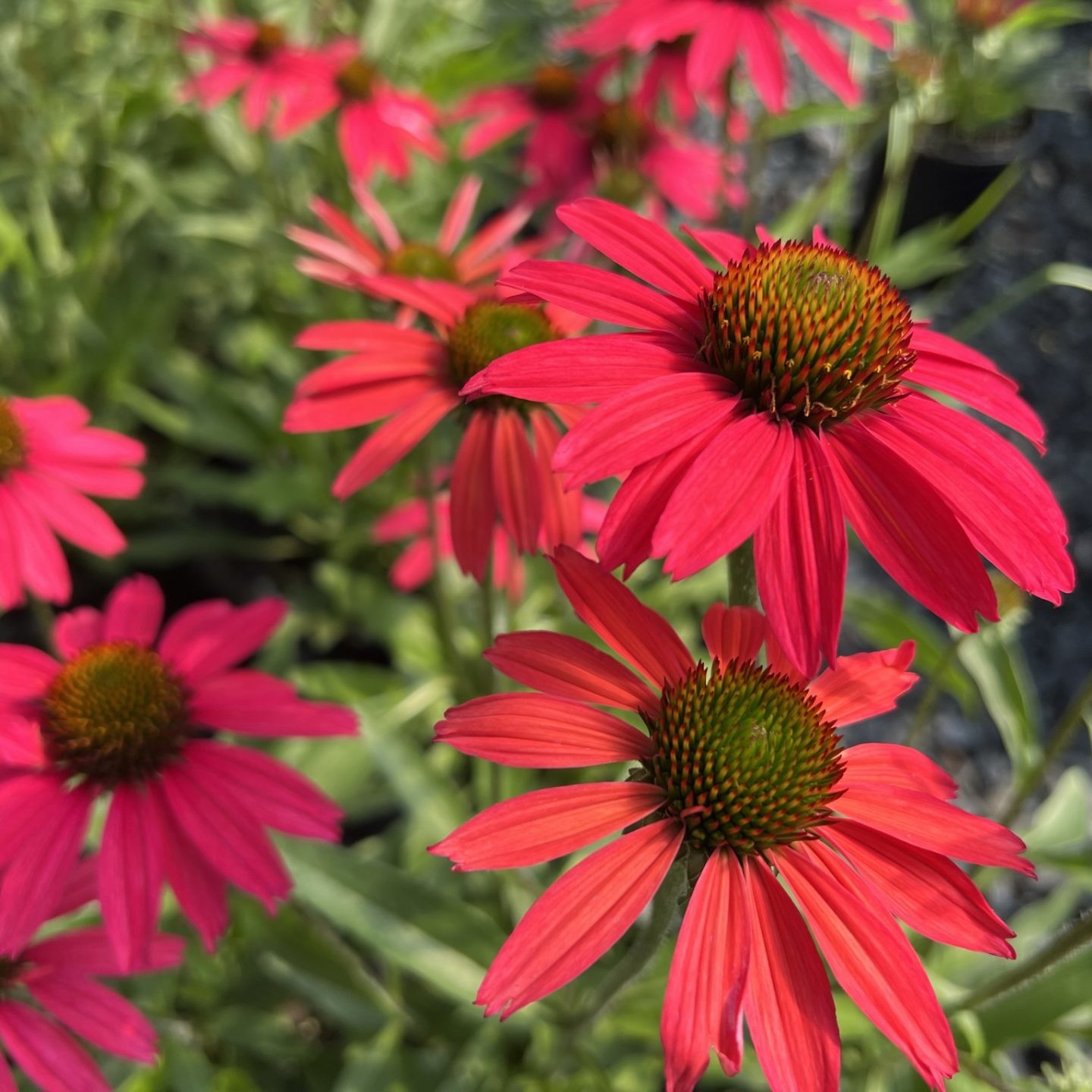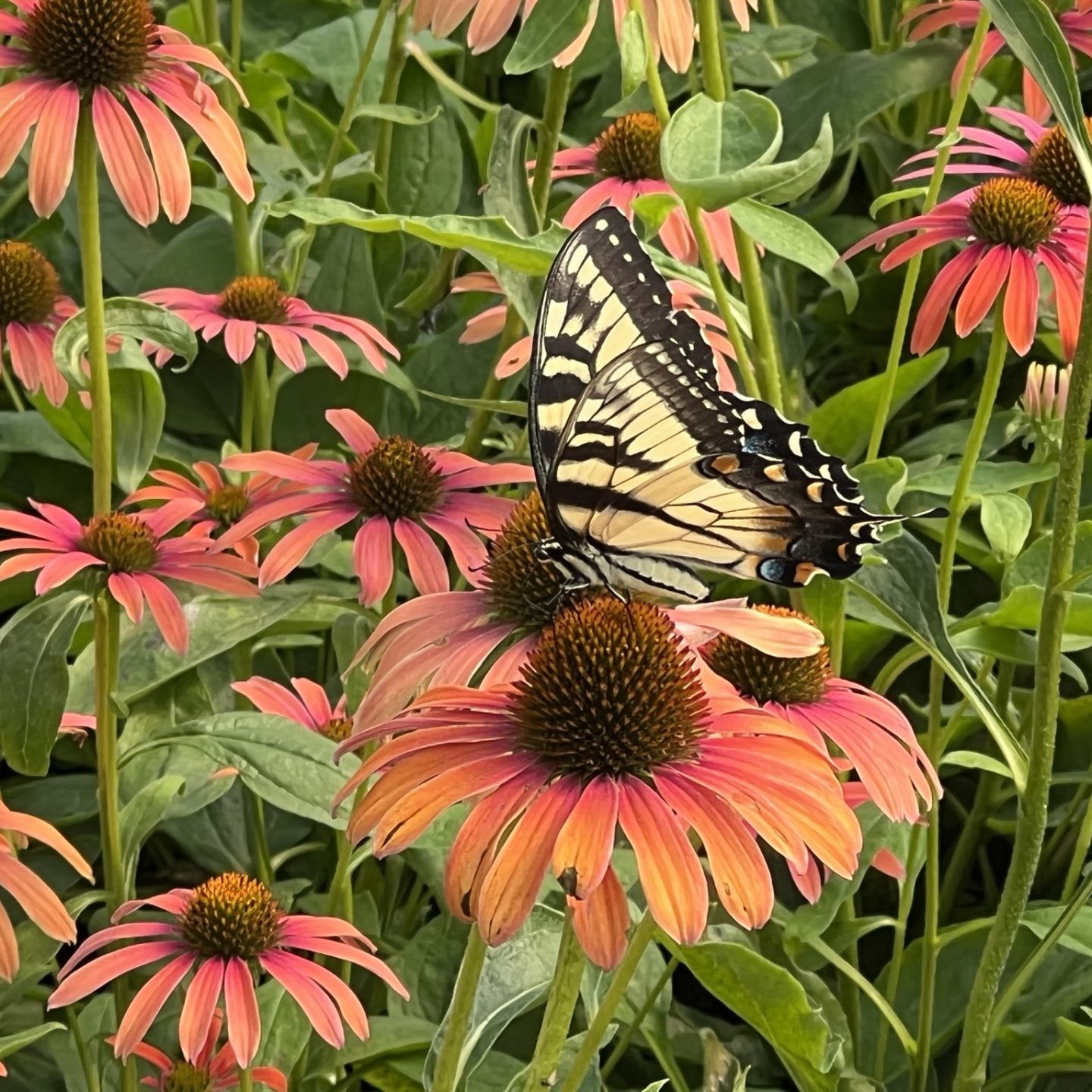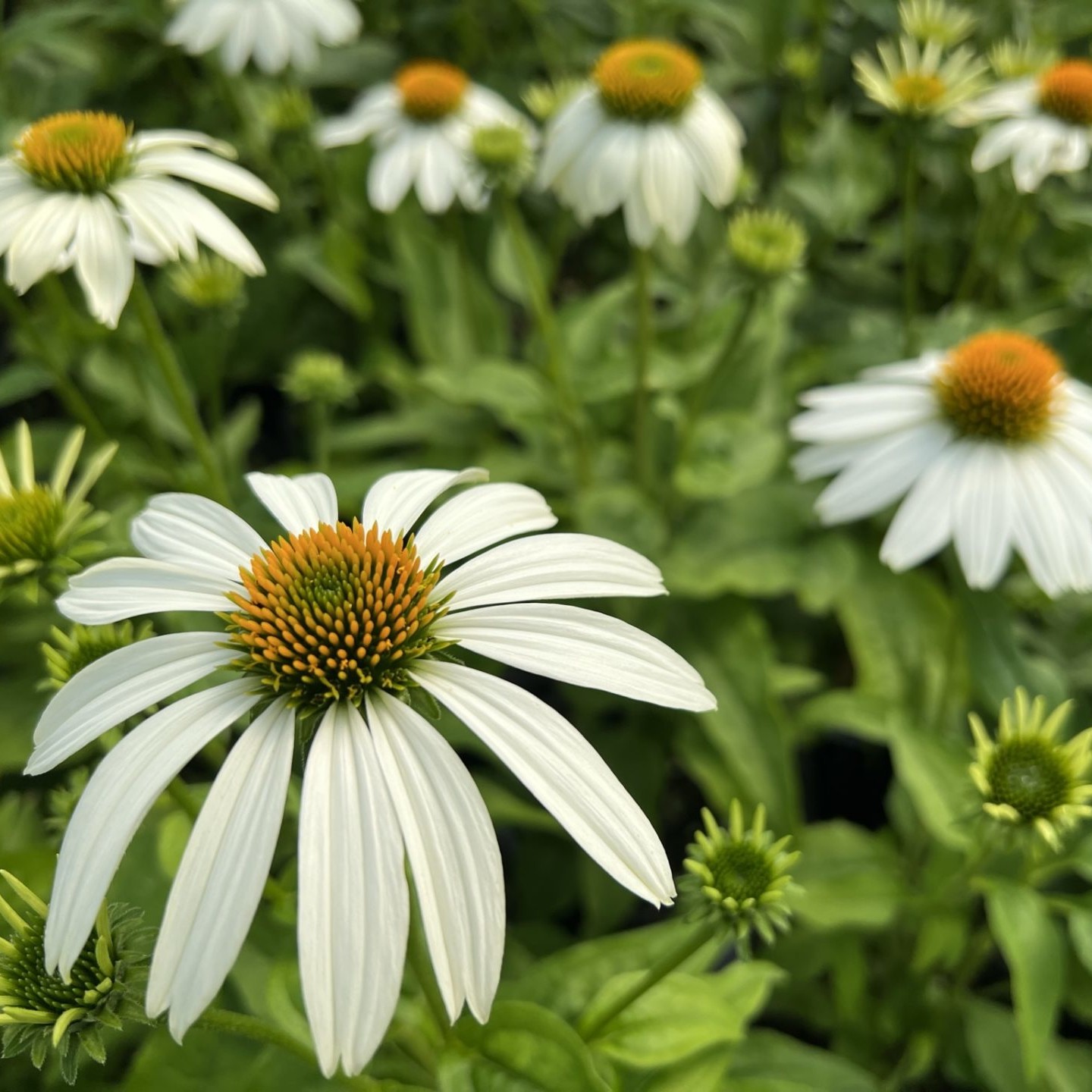Designing Your Native Perennial Plant Program for Retail

When you hear the name Cavano’s Perennials, what comes to mind? Most folks would say perennial grower or cut flowers (if you are familiar with the company’s history). However, several years back we discovered that over 40% of the plants we were selling were Mid-Atlantic or US native plants and their cultivars (it is now significantly higher). Huh, maybe we are a native plant nursery, as well. That’s a substantial number which increases yearly.
The native plant movement, along with interest in plants overall, grew during the COVID pandemic. Customers were able to spend more time outdoors, on social media, reading articles, and listening to webinars – and there was a large amount of native plant content to be found. Butterflies and birds were colorful and entertaining, while the notions of low input gardening, stormwater management, and backyard habitats sealed the deal.
When trying to capitalize on this “growing” market (and yes, the pun WAS intended), start with the plants that already sell well for you. Trying to maintain an inventory of every native plant to the Mid-Atlantic is not only challenging for your staff, but overwhelming for the customer.
In our case, sun loving plants like Echinacea, Rudbeckia, Aster, and ornamental grasses were already top sellers as well as reliable garden plants. So, let’s take Echinacea as an example.

- Start with the straight species – Echinacea purpurea. This plant should always be in stock, and your quantities throughout the season should demonstrate to your customer that you are committed. When you have your native plant event, consider stocking 50+ Echinacea purpurea (depending on your footprint) – fill an endcap!
- Next, select 3-4 cultivars and carry substantial numbers of these as well. Make your selections based on current research, availability, and color variation. Some of my favorites are Echinacea ‘Sensation Pink’, E. ‘Glowing Dream’, E. ‘Fragrant Angel’, and E. ‘Julia’. Each of these cultivars rated well in recent trials, are documented to still attract pollinators (yes, cultivars can still be beneficial to pollinators), and provide an assortment of color. This group of plants would also warrant end cap placement as a group – allowing the customer to not be too overwhelmed with the selection.
- Last, carry an assortment of other Echinacea at varying price points in smaller quantities, as your budget and space allow. This is where your die-hard, master gardeners and garden club members will go to buy a few new additions to their garden – just to try. You might want to include seed grown varieties like Echinacea PowWow® White and ‘Ruby Star’, or selections from a series – like Sombrero®, KISMET® or ButterflyTM.
These ideas can be used across many other genera of perennials, as well. Seasonally you could do a push like this with Rudbeckia, Aster, and ornamental grasses. As well as a similar push for shade loving native plants like ferns, Heuchera, and Tiarella.
As we “grow” these native plant gardeners, we must remember that many are new to any type of gardening. We want to support them in their new endeavor and provide plants that are easy to grow and garden worthy. We do not want them to fail (we want them back to buy more); and when frustration sets in, we should be available to ease their concerns. Possible ideas for support include:
- Instruction on how to use a plant ID app (tags always get lost and even experienced gardeners forget plant names)
- Host a native plant expert session that might be available at a set time each week for customers to come in and ask questions. This could be someone on your staff, a partnership with a local gardening group, or even a professional presentation. I know when I speak to homeowners about native plants, I am always bombarded with a myriad of questions at the end of the talk.
- Partner with a local institution and/or participate in pollinator trials of native species and their cultivars (especially new releases). Encourage your customer base to engage and become citizen scientists.
- Create a resource page on your website, with content for the beginner and advanced native plant gardener.

So, where do native spring ephemerals and other unusual/hard to find native plants fit in? Look at these plants as a group, rather than individually. Perhaps you hold a spring ephemeral event in April. These plants can be difficult to source, so consider a partnership with a specialty native plant nursery. Allow them to bring their plants, set up a pop-up store, and sell – it’s win-win. You aren’t responsible for maintaining this stock when it goes dormant and becomes unsaleable, and you look good by promoting a small niche nursery.
Plants mentioned in this article
- Echinacea purpurea
- Echinacea purpurea ‘Fragrant Angel’ PP16,054 (PRAIRIE PILLARSTM Collection)
- Echinacea purpurea PowWow® White
- Echinacea purpurea ‘Ruby Star’
- Echinacea purpurea ‘Sensation Pink’ PP26,593
- Echinacea x ButterflyTM ‘Julia’ PP24,629
- Echinacea x ‘Glowing Dream’ PP24,329 (DREAMTM Series)
Mid-Atlantic Research Sources
- Mt. Cuba Center Trials (https://mtcubacenter.org/research/trial-garden/)
- Penn State University Bees, Bugs & Blooms Trial (https://ento.psu.edu/news/bees-bugs-blooms-2013-a-pollinator-trial)